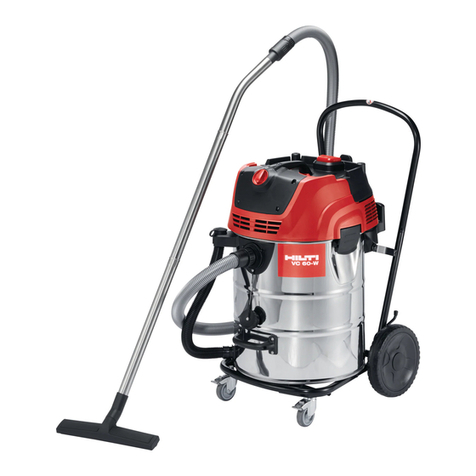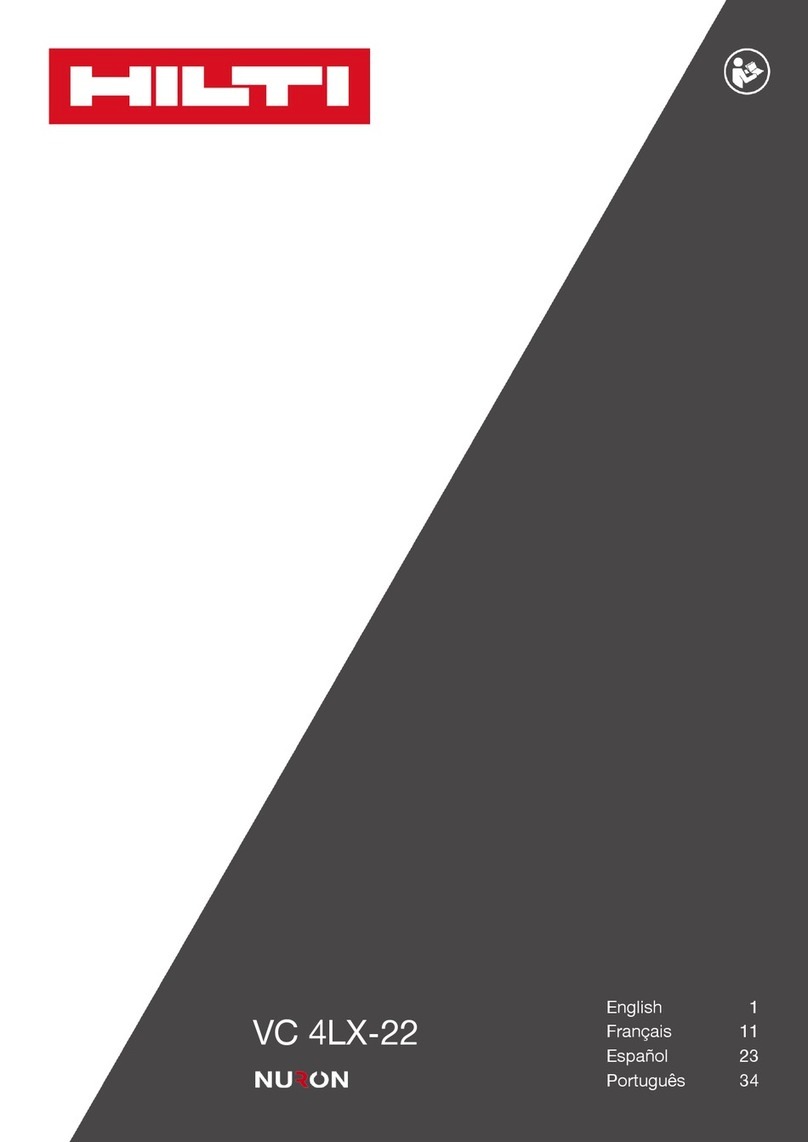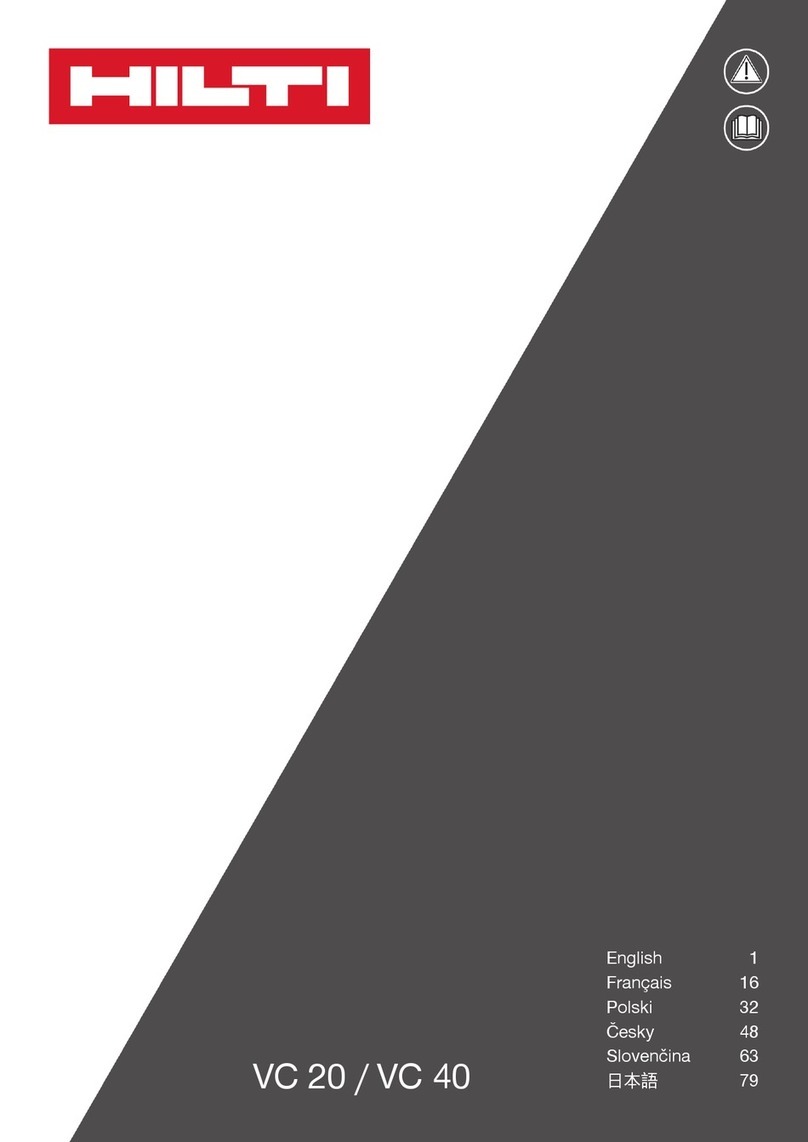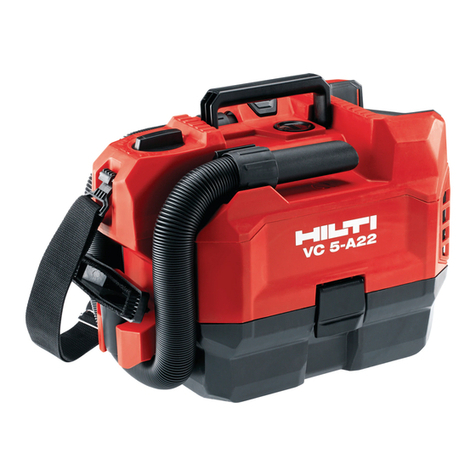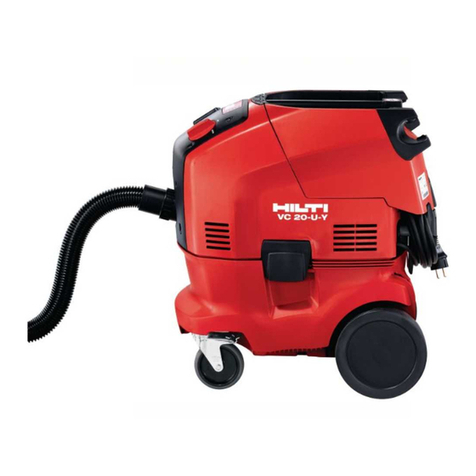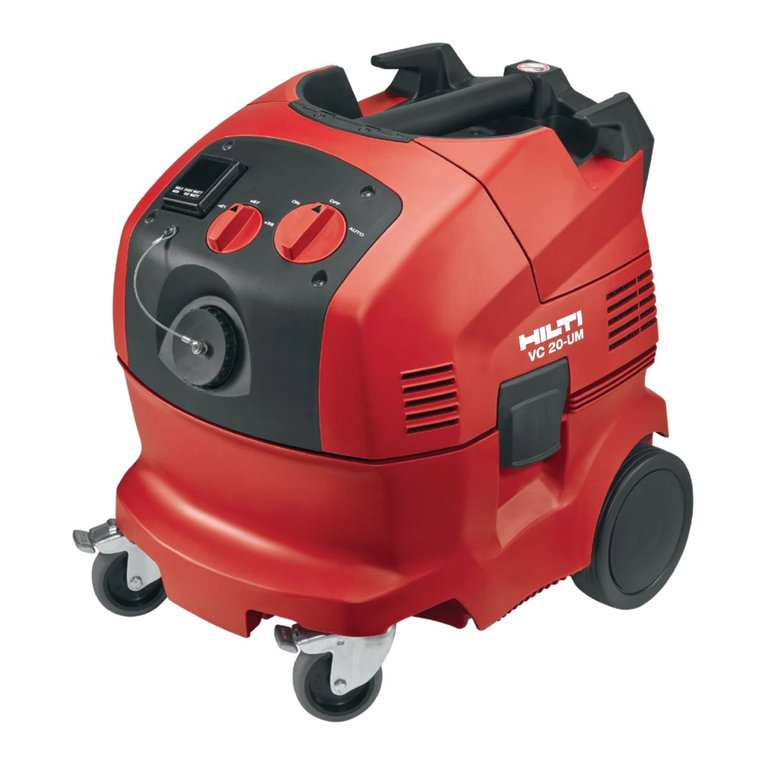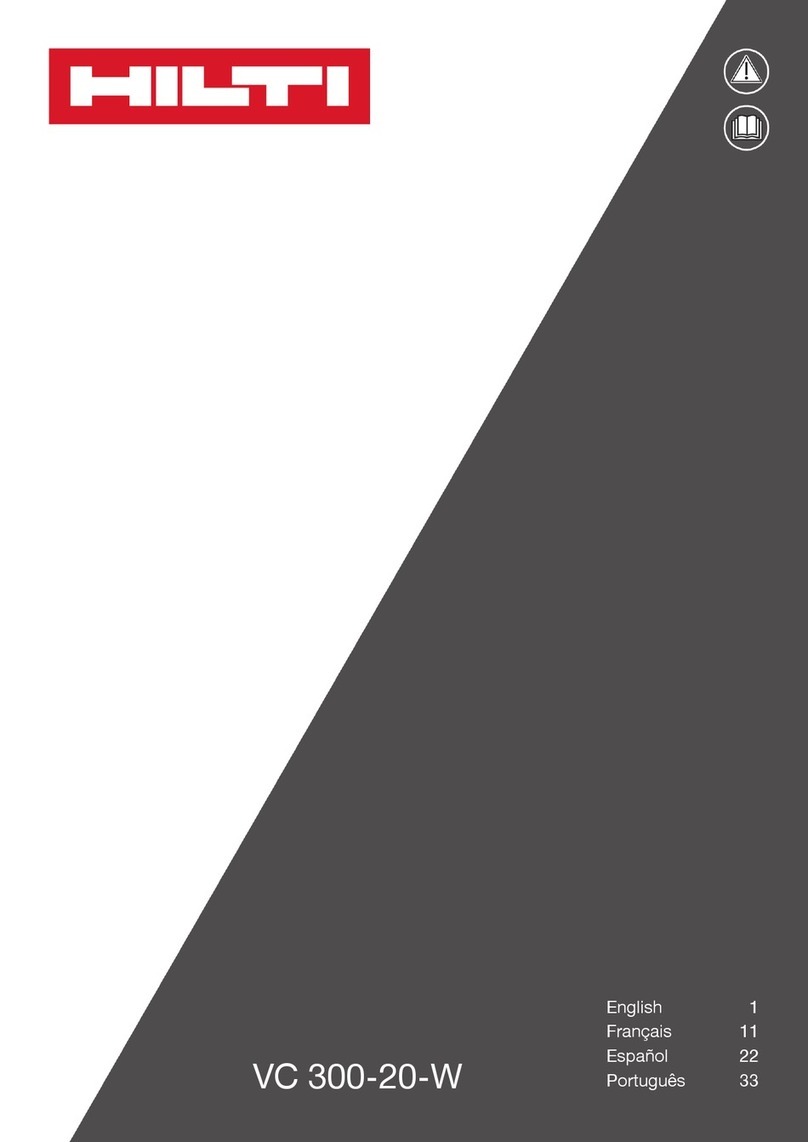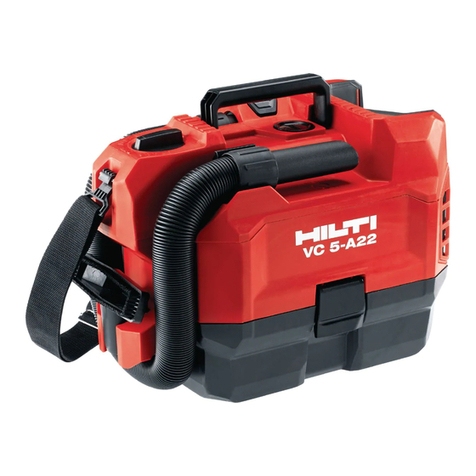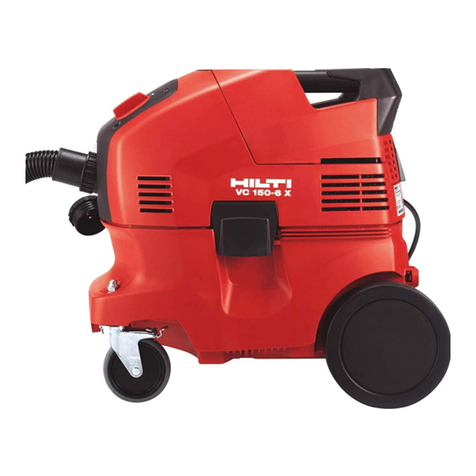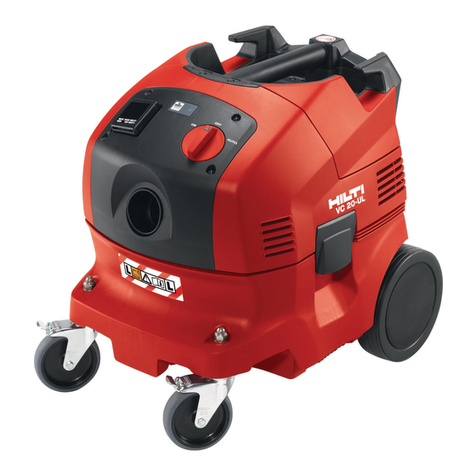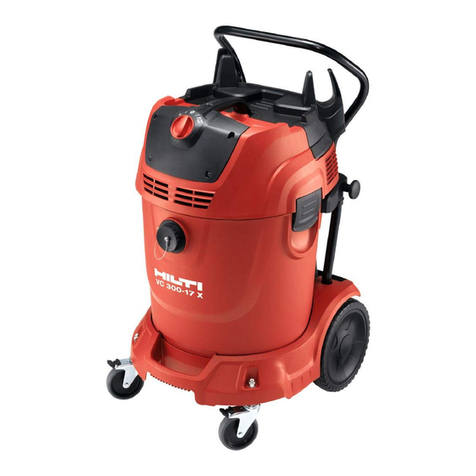
h) Avoid unusual body positions. Make sure you
work from a safe stance and stay in balance at all
times.
i) Wear non-skid shoes.
j) Always lead the supply cord, the extension cord
and the suction hose away to the rear when work-
ing. This will help to prevent tripping while working.
k) After finishing the work, always tidy up and stow
the supply cord, extension cord and suction hose
away securely. This will reduce the risk of tripping
and falling.
l) Do not transport the appliance by crane.
m) Check to ensure that the appliance is switched
off before plugging the supply cord into a power
outlet.
n) WARNING: Some dust created by grinding, sand-
ing, cutting and drilling contains chemicals known
to cause cancer, birth defects, infertility or other
reproductive harm; or serious and permanent res-
piratory or other injury. Some examples of these
chemicals are: lead from lead-based paints, crys-
talline silica from bricks, concrete and other masonry
products and natural stone, arsenic and chromium
from chemically-treated lumber. Your risk from these
exposures varies, depending on how often you do
this type of work. To reduce exposure to these
chemicals, the operator and bystanders should
work in a well-ventilated area, work with ap-
proved safety equipment, such as respiratory pro-
tection appropriate for the type of dust generated,
and designed to filter out microscopic particles
and direct dust away from the face and body.
Avoid prolonged contact with dust. Wear protec-
tive clothing and wash exposed areas with soap
and water. Allowing dust to get into your mouth,
nose, eyes, or to remain on your skin may promote
absorption of harmful chemicals.
5.4 General safety rules
a) Usetherightapplianceforthejob.Donotuse
the appliance for purposes for which it was not
intended. Use it only as directed and when in
faultless condition.
b) Never leave the appliance unattended.
c) Take the influences of the surrounding area into
account. Do not use the appliance where there is
ariskoffireofexplosion.
d) Protect the appliance from frost.
e) CAUTION - Store appliances in a secure place
when not in use.When not in use, appliances must
be stored in a dry, high place or locked away out of
reach of children.
f) Check to ensure that the cap is fitted to the hose
socket during transport and when the vacuum
cleaner is not in use.
g) Always unplug the supply cord from the power
outlet when the appliance is not in use (during
breaks), before cleaning and maintenance and
before changing the filter.
h) Switch the appliance off before transporting it.
i) Check the appliance and its accessories for any
damage. Guards, safety devices and any slightly
damaged parts must be checked carefully to en-
sure that they function faultlessly and as intended.
Check that moving parts function correctly with-
out sticking and that no parts are damaged. All
parts must be fitted correctly and fulfill all condi-
tions necessary for correct operation of the appli-
ance. Damaged guards, safety devices and other
parts must be repaired or replaced properly at an
authorized service center unless otherwise indi-
cated in the operating instructions.
j) Check that the filter is seated correctly. Check to
ensure that the filter is undamaged.
k) Have your appliance serviced by a qualified repair
person using only identical replacement parts.
This will ensure that the safety of the appliance is
maintained.
l) Disconnect the plug from the power source before
making any adjustments, changing accessories,
or storing the appliance. Such preventive safety
measures reduce the risk of starting the appliance
accidentally.
m) Use the appliance and its accessories etc. in ac-
cordance with these instructions and in the man-
ner intended for the particular type of appliance,
taking into account the working conditions and
theworktobeperformed.Use of appliances for
applications different from those intended could re-
sult in a hazardous situation.
n) Do not pull the wheels of the vacuum cleaner over
the supply cord.
o) The water level limiting device must be cleaned
regularly in accordance with instructions and
checked for signs of damage.
5.5 Mechanical
a) Follow the instructions concerning care and main-
tenance.
b) Maintain the machine carefully. Check for mis-
alignment or binding of moving parts, breakage
of parts and any other condition that may affect
the machine’s operation. If damaged, have the
machine repaired before use. Poor maintenance of
electric appliances is the cause of many accidents.
5.6 Electrical
a) The appliance’s supply cord plug must match the
outlet. Never modify the plug in any way. Do not
use any adapter plugs with earthed (grounded)
appliances. Unmodified plugs and matching outlets
will reduce risk of electric shock.
b) Insert the plug in a suitable earthed/grounded
power outlet which has been correctly and safely
en
6
Printed: 04.07.2014 | Doc-Nr: PUB / 5129763 / 000 / 03
